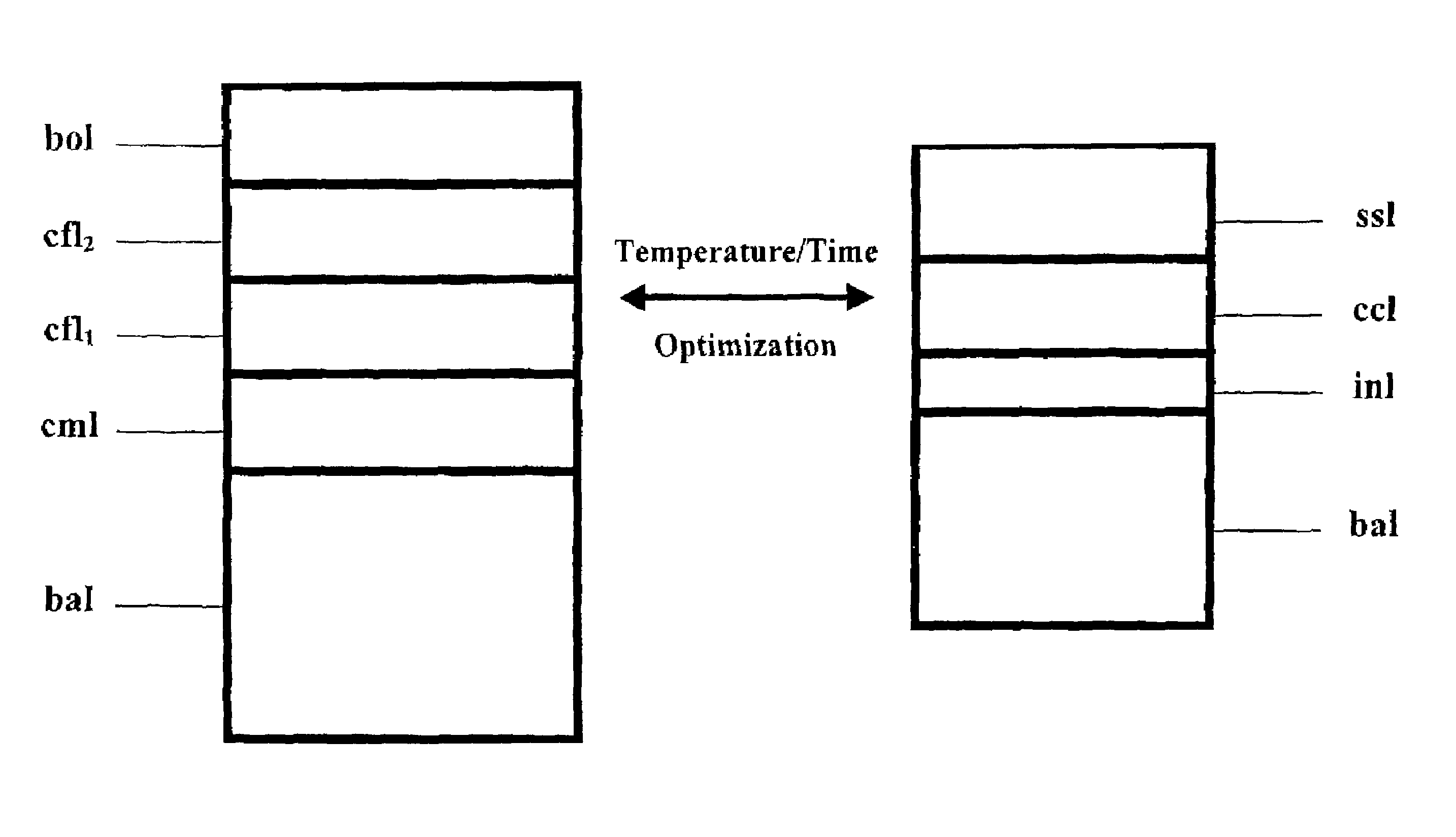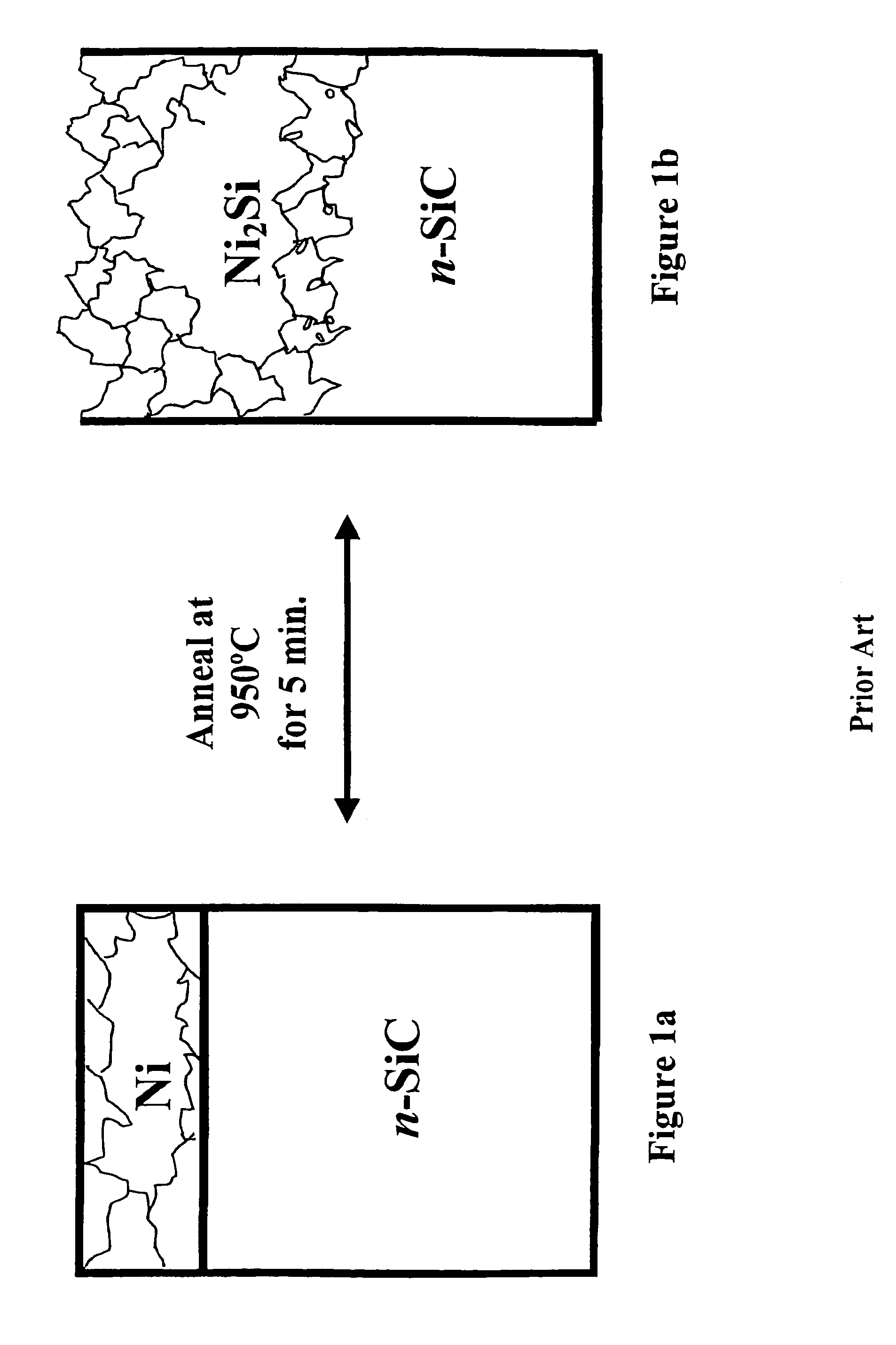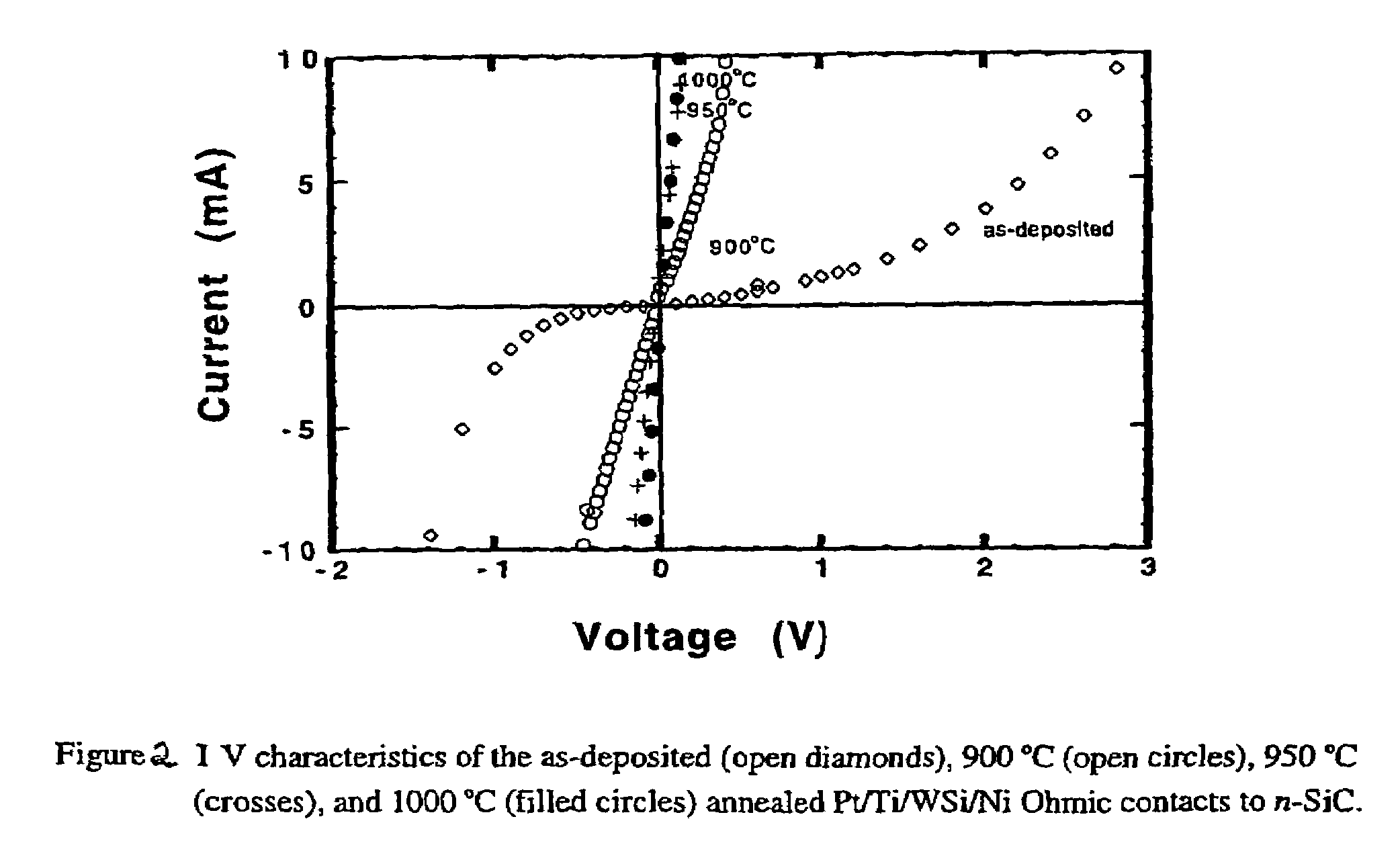Formulation and fabrication of an improved Ni based composite Ohmic contact to n-SiC for high temperature and high power device applications
a technology of composite ohmic contact and ni based ni, which is applied in the direction of semiconductor devices, basic electric elements, electrical apparatus, etc., can solve the problems of significant challenges to overcome, unreliability of devices, and complex metallization of wide bandgap semiconductors (sic). achieve excellent electrical properties, reduce the effect of metallization complexity
- Summary
- Abstract
- Description
- Claims
- Application Information
AI Technical Summary
Benefits of technology
Problems solved by technology
Method used
Image
Examples
Embodiment Construction
[0056]The present invention overcomes undesirable phenomena associated with annealed pure Ni-nSiC Ohmic contacts. FIGS. 1(a) and 1(b) show schematic representations of prior art pure Ni Ohmic contacts to n-SiC. FIG. 1(a) shows the as-deposited Ni-nSiC and FIG. 1(b) shows the Ni-nSiC Ohmic contact, annealed at 950° C. These contacts are plagued with problems including a rough surface, the presence of unreacted carbon, a broad, non-abrupt interface layer and the presence of Kiirdendall voids.
[0057]The present invention successfully addresses the disadvantages of the prior art by limiting the interfacial reaction, tying up unreacted carbon, limiting contact thickness increase and eliminating voids and surface roughness while maintaining electrical integrity.
[0058]All semiconductor devices require high quality, low resistivity thermally stable reliable n- and p-type Ohmic contacts. Ohmic contacts are essential for the transfer of signals between the SiC device and external circuitry. Th...
PUM
| Property | Measurement | Unit |
|---|---|---|
| temperatures | aaaaa | aaaaa |
| temperatures | aaaaa | aaaaa |
| temperatures | aaaaa | aaaaa |
Abstract
Description
Claims
Application Information
 Login to View More
Login to View More - R&D
- Intellectual Property
- Life Sciences
- Materials
- Tech Scout
- Unparalleled Data Quality
- Higher Quality Content
- 60% Fewer Hallucinations
Browse by: Latest US Patents, China's latest patents, Technical Efficacy Thesaurus, Application Domain, Technology Topic, Popular Technical Reports.
© 2025 PatSnap. All rights reserved.Legal|Privacy policy|Modern Slavery Act Transparency Statement|Sitemap|About US| Contact US: help@patsnap.com



